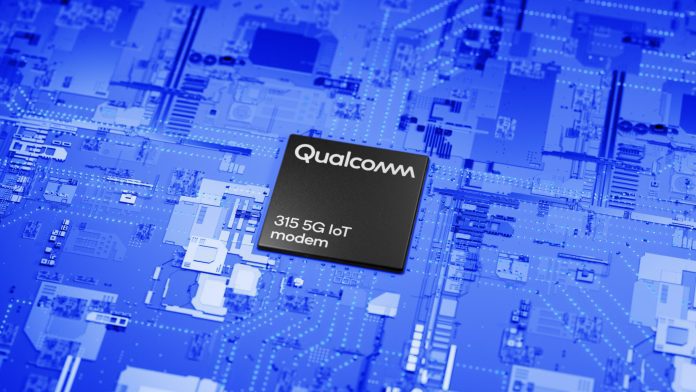Qualcomm has announced its first “purpose-built” 5G modem for industrial IoT applications, scheduled for release next month (June 2021). The new modem-to-antenna solution is pitched at the manufacturing, energy, agriculture, construction, mining, and retail sectors. The Qualcomm 315 5G IoT Modem-RF System incorporates the latest Release 16 features of the 5G standard for industrial IoT.
It also supports applications currently served by LTE networks, with “pin-to-pin compatibility” with legacy LTE modules, providing a pathway to migrate existing applications onto new 5G networks. The unit supports global 5G NR sub-6GHz bands and operates in stand-alone (SA) only mode, with the capability to switch to LTE as needed. It can be deployed over private or public 5G networks, leveraging network slicing or in isolation.
The industrial market welcomed the release. Bosch said the new devices will enable “interesting new functions for industrial IoT” and help to “open up new applications with 5G”. Siemens said the release will help it to develop “state-of-the-art industrial 5G products”. Schneider Electric said the launch addresses industrial requirements for “massive bandwidth, reliability, and performance”.
Industrial 5G will “unlock unprecedented opportunities and efficiencies” in Industry 4.0, it said. Meanwhile, Quectel said its new RG500S and RM500S 5G NR modules will use the Qualcomm modem. The two module series will support 5G NR in sub-6GHz bands in SA mode and LTE bands worldwide. It is pitching them for “industrial IoT, smart energy, and private 5G networks”, it said.
Rival module maker Telit stated: “This new system will serve a number of commercial and industrial use cases where, until now, there hasn’t been a 5G connectivity solution available — in particular energy distribution, smart grid technologies, and industrial control and automation.”
Qualcomm said the product is built with “premium gigabit class performance, low-power, and thermal-efficient capabilities to enable a new generation of fast, powerful and high-performing IoT solutions”. The unit is pitched to complement Qualcomm’s existing portfolio of LTE IoT modems.
Jeffery Torrance, senior vice president for product management at Qualcomm, said: “Our new 5G IoT solution will help stimulate and scale the 5G IoT industry and enable the transitions needed for Industry 4.0. This solution will help create long-lasting devices and promote growth and expansion in the 5G IoT industry, allowing seamless integration for customers utilizing previous generations of connectivity.”
The announcement comes just days after Qualcomm introduced 5G M.2 card reference designs based on its new Snapdragon X65 and X62 5G modems, geared to accelerate 5G adoption among higher-grade industrial 5G devices, alongside premium smartphones. The Snapdragon X65 system, announced in February, is the company’s fourth modem-to-antenna solution.
It features a revamped radio-frequency (RF) front-end and new mmWave antenna modules, and is designed to support “fiber-like” 5G speeds (10Gbps on the downlink) and make smarter use of available spectrum. It also works as an upgradeable architecture to “future-proof” devices for new 5G features, enhancements, and customisation.
Qualcomm called it the “biggest leap in 5G since… its first modem-RF system” back in February. Alongside, the company announced a new Snapdragon X62 5G modem-to-antenna system, optimised for mainstream adoption of mobile broadband applications. The X62 5G offers headline download speeds of 4.4 Gbps, and is targeted towards lower-end devices.
Qualcomm called it “the world’s first 10 Gigabit 5G and the first 3GPP release 16 modem-to-antenna system”. It went so far as to name-check private 5G, the new bandwagon enabler of Industry 4.0, as a key use case in its press statement. But there will be a wait, for the Industry 4.0 set on tenterhooks for Release 16 industrial 5G devices; Qualcomm is offering samples already, but commercial products based on X65/62 solutions will only launch in late 2021.

